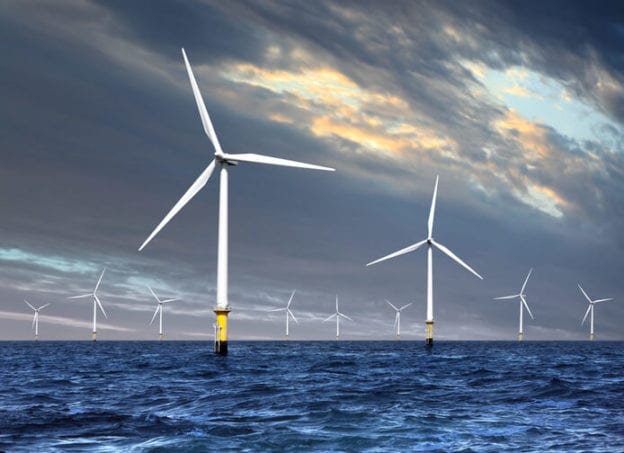Solving Issues of Power Deliverability for Offshore Wind Generation
The post Solving Issues of Power Deliverability for Offshore Wind Generation appeared first on POWER Magazine.

Offshore wind generation could be a game-changer for U.S. generation-tremendous size, scalability, high capacity factors, zero-carbon, zero-cost fuel, and a proven track record in the UK and Europe. The industry is supported by aggressive state renewable programs, including in New York (9 GW by 2035) and New Jersey (7.5 GW by 2035), which rely on offshore wind to achieve clean energy targets.
COMMENTARY
The offshore wind industry, however, has a problem-generation deliverability. This is a complicated and expensive problem. Offshore generation deliverability costs can account for 15% to 30% of total project costs, depending on a variety of factors, including water depth, seabed conditions, and distance to shore. Consequently, the cost and risk allocation of generation deliverability facilities and the regulatory mechanism governing onshore delivery to load are critical considerations for each offshore wind project.
 Dorothy Black Franzoni
Dorothy Black FranzoniThe UK and European models currently are little help to U.S. developers and policymakers. In the UK and in Europe, generation deliverability costs are almost entirely assumed or mitigated by government ownership or regulatory cost-socialization. In the UK, a government regulator, Ofgem-Office of Gas and Electricity Markets-implements auctions to award winning bidders a low-return, low-risk, long-term operation agreement. While returns are low, these contracts pay owners of generation delivery facilities regardless of the relevant offshore wind generation facility's production. Thus, their return on investment and profitability is not tied to the generation assets' performance (or lack thereof).
 Joe Hall
Joe HallIn other European countries with robust offshore wind generation (Germany, the Netherlands, and Denmark), offshore transmission facilities are owned and operated by either state-sanctioned or state-owned monopolies, and generation deliverability facility costs are, in effect, socialized. Thus, again, the operational risk of the generation delivery facilities is mitigated.
In the U.S., offshore wind developers have assumed the cost and risk of generation deliverability and therefore projects will not move forward unless that risk is mitigated. Moreover, there may be insufficient onshore access points to profitable load centers for the amount of planned offshore generation capacity. Thus, faced with development risk and potentially a limited number of access points, offshore wind developers-as well as policymakers-must evaluate the most financeable approach for getting offshore wind power to onshore load.
 Brian Plunkett
Brian PlunkettWhile third parties can own generation tie-line assets, performance payments are still currently tied to generation performance. At this time, most states and the federal government do not appear to be interested in assuming this risk. This may or may not change in the future. As for onshore access, there are two approaches being debated in the industry, including by stakeholders in the New York ISO, PJM Interconnection, and ISO New England. One is the traditional generation tie line" approach, and the other is the offshore transmission hub" approach.
The generation tie-line approach has significant benefits. Federal Energy Regulatory Commission policies exempt generation tie lines from full open access" requirements and rebuttably presume that the scope and sizing of the generation tie-line asset is appropriately tailored to serve the relevant generation facilities, and not third parties. This legal presumption makes it more difficult for third parties attempting to gain access to a project owner's generation tie line. This increased level of assurance of generation deliverability decreases development risk.
Moreover, the independent system operators and regional transmission organizations currently evaluating offshore wind projects already have tariff procedures that can, in general, accommodate offshore wind projects. Therefore, the learning curve for evaluating interconnection requests for offshore wind generation facilities is not steep. However, from a policy perspective, the generator tie-line approach potentially encourages incremental, project-by-project" development of offshore wind, and does not coordinate generation planning. This may ultimately hinder the development of a robust offshore wind industry.
As for offshore transmission hubs, they could promote a coordinated planning process, but they implicate significant regulatory questions. For example, stakeholders are contemplating the categorization of hubs as public policy" infrastructure projects, which could potentially qualify their costs for cost socialization akin to what is done in Europe (thereby mitigating developers' risk). This type of cost socialization, however, throws gasoline on the already raging debate in the U.S. concerning the appropriate level of subsidies for green" projects, which is already a polarizing issue in some areas. Moreover, hubs implicate the classic cart-and-horse" project development conundrum because hubs are difficult to study unless they link to specific, dedicated generation facilities.
In turn, offshore transmission hubs not tied to specific facilities may also raise concerns regarding preferential treatment relative to onshore and offshore. Onshore generation is not permitted to maintain queue positions when no specific interconnecting generation project is identified. A different standard arguably cannot fairly apply to offshore generation.
It is not yet clear which direction the industry will go. For the first projects, the generator tie-line approach may be the only realistic possibility. That has been the experience to date in both New York and New Jersey. Through creative commercial arrangements with third parties knowledgeable about transmission operations in the relevant U.S. markets, owners of these first offshore wind projects should be able to achieve some cost savings from separating the operating risks of the project's transmission assets from those of its generation assets. As more projects are planned, however, the viability and merits of generation tie lines versus offshore transmission hubs may become more apparent.
-Dorothy Black FranzoniandJoe Hallare partners, andBrian Plunkettis an associate at Eversheds Sutherland (US) LLP.
The post Solving Issues of Power Deliverability for Offshore Wind Generation appeared first on POWER Magazine.